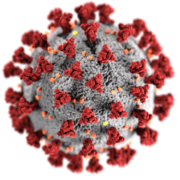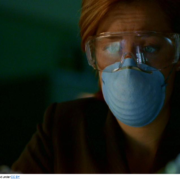By CHHS Extern Sharon Sidhu
President Trump declared a national emergency over the coronavirus COVID-19 pandemic on Friday afternoon, “unleash[ing] the full power of the federal government.”
This action, under the authority of the Stafford Act, opened up access to up to $50 billion for states, territories, and localities, to use towards the shared fight against the spread of COVID-19. The Stafford Act frees up federal funds when federal assistance is needed to supplement State and local efforts in providing emergency services for the protection of lives, public health and safety, or to contain the threat of a catastrophe in the United States.
The White House wrote a letter to the director of the FEMA, and the secretaries of the Department of Homeland Security, Department of Treasury and the Department of Health and Human Services outlining four major takeaways from the emergency declaration.
First, the letter states FEMA may take emergency protective measures and provide assistance under the authority of Sections 502 and 503 of the Stafford Act. Under Section 502, the President can direct any Federal agency to use its resources (including personnel, equipment, supplies, and facilities) “in support of State and local emergency assistance efforts to save lives, protect property and public health and safety, and lessen or avert the threat of a catastrophe, including precautionary evacuations.” This includes providing technical and advisory assistance to State and local governments for the performance of essential community services, issuance of warnings of risks or hazards, dissemination of public health and safety information, and management of immediate threats to public health and safety. Section 502 also prompts the federal government to assist State and local governments in the distribution of medicine, food and other consumable supplies, and emergency assistance. Section 503 limits the amount of federal assistance not to exceed $5 million for a single emergency, unless the President deems it necessary, which in the case of COVID-19, President Trump has.
Second, the letter encourages all State and local governments to activate their Emergency Operation Centers and to review their emergency preparedness plans. President Trump’s declaration also instructs hospitals nationwide to activate their emergency preparedness contingency plans in order to meet the needs of Americans who have and may have contracted COVID-19. President Trump also said the Health and Human Services Secretary Alex Azar will be able to “waive provisions of applicable laws and regulations to give doctors, all hospitals, and health care providers maximum flexibility to respond to the virus.” These waivers include waivers to access limits on numbers of beds and lengths of stays in hospitals, as well as waivers to rules on bringing in additional physicians at certain hospitals as needed.
Third, the letter instructs the Department of Treasury to provide relief from tax deadlines to Americans who have been adversely affected by the COVID-19 emergency, pursuant to 26 U.S.C. 7508(A)(a), which grants the Department of Treasury to postpone certain deadlines for those who have been affected by a federally declared disaster.
Finally, in his letter, President Trump encouraged all governors and tribal leaders to consider requesting Federal assistance under section 401(a) of the Stafford Act. Section 401(a). Section 401(a) requires requests for a declaration by the President that a major disaster exists to be made by the Governor of the affected State. The request needs to be based on the conclusion that the disaster “is of such severity and magnitude that effective response is beyond the capabilities of the State” such that Federal assistance is necessary. The President may grant the request of the Governor and declare that a major disaster or emergency exists, and thereafter direct federal funds to provide relief assistance, as well as assistance in the distribution of medicine, food, and emergency assistance to the states.








